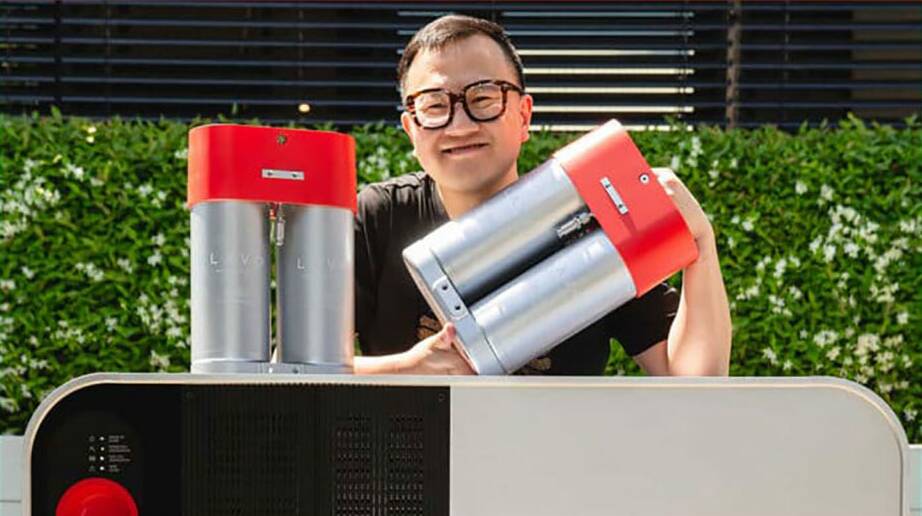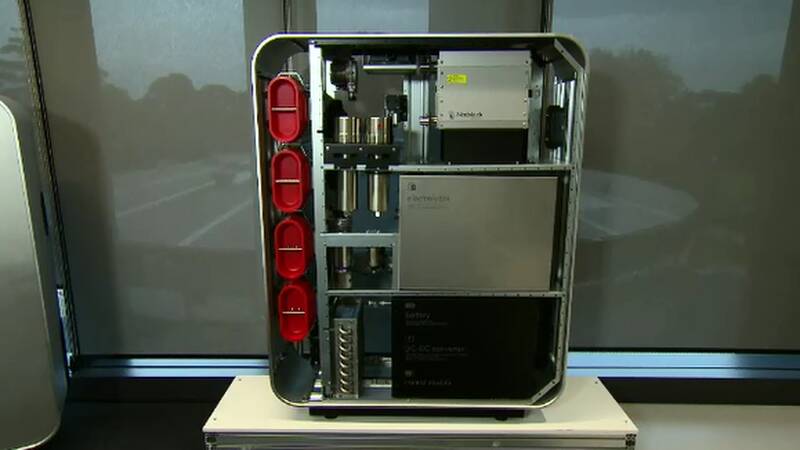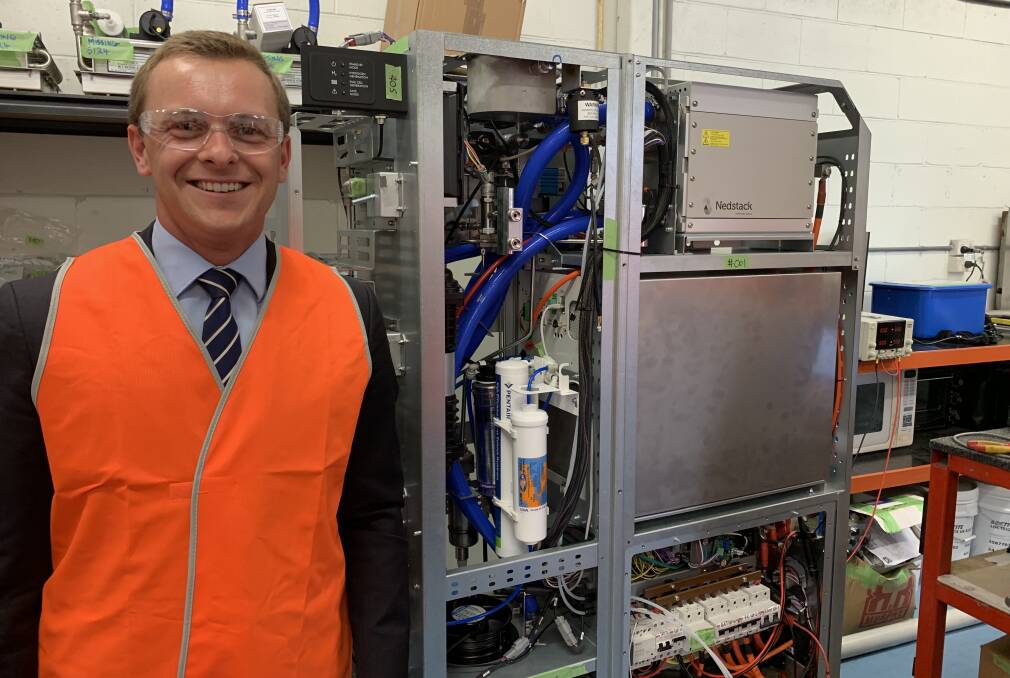
Up to 250 new jobs will be created in the Hunter's emerging hydrogen economy as a result of the expansion of a Tomago manufacturing facility.
LAVO Hydrogen Storage Technology has received a $5million state government grant to mass produce one of the world's first solid state hydrogen energy storage devices to meet rapidly growing local and international demand.
The LAVO battery, which is about the size of a large fridge, can be hooked up to an existing array of solar panels. Inside electrolysers use that power to convert water into hydrogen and oxygen.
The unit can store three times as much power as the largest popular commercially available wall-mounted batteries, allowing it to power the average household for two to three days on a single charge.
Unlike other lithium batteries, it can also constantly recharge itself rather than waiting until it has been fully discharged.
The system costs about $34,000, has a lifespan around three times longer than current lithium batteries. It has a lifespan of about 30 years.

It is presently one of the most sought after products in the renewable energy consumer sector.
A delegation of 14 ambassadors from Europe and the European Union visited the company's facility last year.
LAVO chief executive Alan Yu said the grant, which is part of the state government's $130 million Regional Job Creation Fund would help the company contribute to the development of sustainable employment opportunities in regional NSW.
"With its proximity to broader NSW regional communities, Newcastle Airport and the Port of Newcastle, the region provides a unique opportunity for LAVO to contribute to the development of sustainable local employment opportunities," Mr Yu said.
"We look forward to working with the NSW Government, our Australian supply chain partners and all key stakeholders in the region on this exciting opportunity."
Lavo is named after Antoine Lavoisier the scientist who named hydrogen.
Parliamentary Secretary for the Hunter Taylor Martin said the government was seeking to lay strong foundations to enable the rapid growth of the region's hydrogen economy.

"The grant to LAVO is an example of how we are supporting the Hunter position itself in the hydrogen industry, create jobs and ensure our future as a major energy exporter," he said.
The Hunter Region is central to the state government's hydrogen strategy.
The region was selected as the only NSW hub site due to the high level of existing interest from industry stakeholders, its skills and research capabilities, infrastructure and resources.
Prime Minister Scott Morrison announced a $3 million feasibility study into the potential of a "green hydrogen hub" at the Port of Newcastle late last year.
Elsewhere, AGL and Twiggy Forrest have signed are memorandum of understanding to investigate the production of green hydrogen production as part of AGL's 10 hectare Hunter Energy Park.
The project to be powered by clean energy, delivered through grid-scale batteries, solar thermal storage, wind, pumped hydro and the co-location of industry, has the potential to create more than 1000 full time jobs across energy production, advanced manufacturing, recycling and the production of chemicals.
Deputy Premier and Minister for Regional NSW Paul Toole, who will visit the LAVO facility on Thursday said round one of the Regional Job Creation Fund had provided $100 million to help businesses expand, attract investment and relocate to regional NSW.
It had supported more than 100 regional projects like LAVO and created about 5,000 new jobs in key engine industries.
A second round will open in early 2022. Grants will range from $100,000 to $5 million to help fund projects such as replacing plant equipment, upgrading technology and developing iconic tourism experiences.
For more information, go to: investregionalnsw.com/RJCFund.







